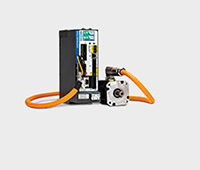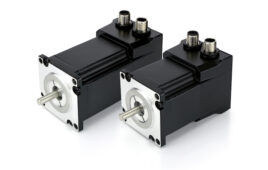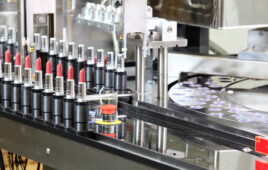Consumer electronics, medical devices and other applications are spurring the development of sensors to measure a range of parameters. One of the latest is a capacitive-based miniature force sensor that can accurately, and with high repeatability, measure forces as low as 1 g.
This sensor lets you measure applied force at discreet points, even at low levels. It is suitable for a number of applications, including medical devices, electronics robotics and others.

Although capacitive sensors have largely supplanted resistive for touch screens, until recently, resistive sensors were the main option available for measuring force.
Resistive sensors are often limited in sensitivity at low levels of pressure. Capacitive sensors, on the other hand, have two electrodes separated by a compressible dielectric structure. When pressure is applied, the gap decreases and capacitance rises. Consequently, capacitive sensors are less susceptible to wear or failure even if subjected to multiple repeat loads.
Capacitive sensors are typically stable in terms of repeatability and durability, and can measure low levels of pressure accurately. Thus, developers of wearable technology and products are evaluating capacitive sensors for these applications.
“By integrating capacitive tactile sensors in the testing and development of wearables, manufacturers could capture and quantify the amount of pressure experienced by customers at specific spots to optimize fit and function,” said Jae Son, founder of Pressure Profile Systems (PPS). “Comfort, after all, plays a large role in determining whether someone will like a product or not.”
There are also many applications in medical equipment design. According to Son, such applications include an advanced catheter system that provides clinicians with more useful and detailed data to aid in diagnosis of esophageal problems, and a screening clinical breast exam called SureTouch that detects breast lumps and, essentially, quantifies the sense of touch. One manufacturer wanted to use a miniature force sensor to control the amount of force used when injecting insulin using a syringe. Capacitive miniature force sensors are being evaluated for this application.
The technology is also well suited for monitoring blood pressure and could be used to create an alternative to pressure cuffs or embedded into future fitness and smartwatches that currently only measure heart rate.
Even within the realm of capacitive sensors, there are different methods to detect a person’s data. In the most familiar use, capacitive touch screens in smartphones use a layer of capacitive material to hold an electrical charge. Touching the screen changes the amount of charge at a specific point of contact.
Capacitive sensors from PPS use two built-in electrodes separated by a compressible gap, eliminating the need to use the electrical charge delivered by the human finger. Thus, the sensors can be activated by someone wearing a glove, for example medical or laboratory personnel, or any object that can apply force.
The miniature force sensor is available in two sizes, each with three force options, and comes with a small microcontroller that performs the capacitance conversion. For more sophisticated applications, up to 128 single-element sensors can be daisy-cained together with a single interface.
Pressure Profile Systems
www.singletact.com
Filed Under: Capacitors, MOTION CONTROL, SENSORS





Tell Us What You Think!